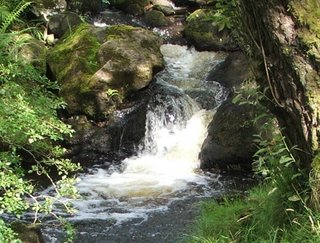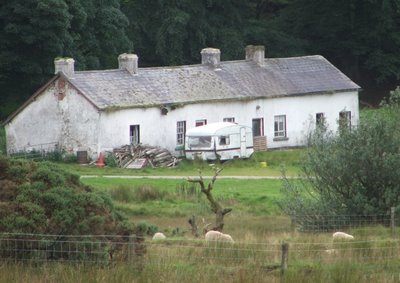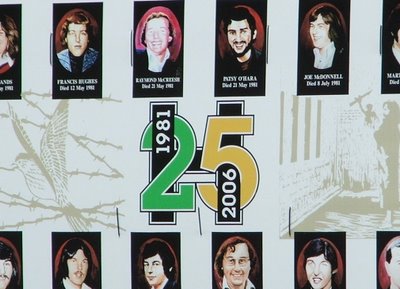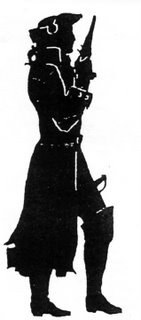I have just spent a few wonderful days living in the midst of the Sperrin Mountains, a region of untold natural beauty and a stronghold of vibrant Gaelic culture. I was pleasantly surprised to come across such a vast area of largely unspoilt natural beauty in development-driven Ireland. Unlike most of the rural regions of the Irish republic that are sadly being urbanised at an alarming rate, there are here stringent controls on building and road construction, on overgrazing as well as the ample provision of state funds to protect natural heritage.
I was pleasantly surprised to come across such a vast area of largely unspoilt natural beauty in development-driven Ireland. Unlike most of the rural regions of the Irish republic that are sadly being urbanised at an alarming rate, there are here stringent controls on building and road construction, on overgrazing as well as the ample provision of state funds to protect natural heritage.
Our northern brethren & the British government can teach us southerners a thing or two on environment protection and land management.
The Sperrin region consists of a landscape of gently rolling mountains, deep valleys (glens), small streams and boglands where ‘sheep’ is king.
 Here farming seems to be thriving: you can see young farmers driving tractors, sheep pens dotting the hillsides and busy market days in towns such as Draperstown.
Here farming seems to be thriving: you can see young farmers driving tractors, sheep pens dotting the hillsides and busy market days in towns such as Draperstown.  Sizeable government grants are provided to stop sheep grazing mountains at certain times of the year so flora can blossom and provide cover for nesting birds.
Sizeable government grants are provided to stop sheep grazing mountains at certain times of the year so flora can blossom and provide cover for nesting birds.
 This farm building is home to the 'sheep collector', a man whose job is collect stray sheep and return them to their owner. The animals are identified by the colour and shape of the dye on their wool.
This farm building is home to the 'sheep collector', a man whose job is collect stray sheep and return them to their owner. The animals are identified by the colour and shape of the dye on their wool. The Flaming Red of the Rowan Tree
The Flaming Red of the Rowan Tree
At this time of year in the Sperrins, one of the great Irish trees of Celtic mythology- the 'Mountain Ash'- gives a beautiful red colour to the autumn days. Also known as the 'Rowan', or 'Caorthann' in Irish, the red berry fruit of this tree only matures in the autumn thereby providing much needed food to wildlife. Its redness and bearer of autumn food made it associated in ancient Celtic times with life giving properties and with fire.
Amazingly for the 21st century, you come across more cyclists, walkers and farm vehicles than cars along the narrow roadways.
A large re-forestation programme is underway. Though primarily commercial and dominated by conifers, nevertheless it is helping to re-introduce the forests that once dominated the landscape. Interestingly, copses of trees woods sprinkle the hillsides planted by farmers to provide shelter for their sheep
The Sperrins are reminiscent of an Ireland that existed 150 years ago.
 Mountain Stream
Mountain Stream The intricate detail shown in the stone walls of this old farm building is testimony to the superb
The intricate detail shown in the stone walls of this old farm building is testimony to the superbcraftmanship of the buliders of a bygone era
The area is also steeped in pre-history: it is a treasure trove of stone circles and megalith tombs some dating back 5,000 years.
Catholic Highlands & Protestant Lowlands But it is its living folk traditions that helps bolster the unique identity that is the Sperrins. Traditional Gaelic music thrives in the pubs and schools; the names of most mountains, rivers, woods and towns are Gaelic in origins and labelled on all road signs. Monuments and posters to IRA volunteers and hunger strikers give visual expression to the strong republicanism that permeates many of the local population, the majority of whom are Catholic. Television news bulletins over the last few decades often spoke of finds of secret weaponry caches in the Sperrins. The inaccessible terrain with its dozens of abandoned farmsteads must have provided safe hide-outs for many an armed republican. Interestingly, locals also speak of other visitors staying incognito in these old buildings, namely British army undercover squads their presence often identified by the butts of their cigarettes left behind.
But it is its living folk traditions that helps bolster the unique identity that is the Sperrins. Traditional Gaelic music thrives in the pubs and schools; the names of most mountains, rivers, woods and towns are Gaelic in origins and labelled on all road signs. Monuments and posters to IRA volunteers and hunger strikers give visual expression to the strong republicanism that permeates many of the local population, the majority of whom are Catholic. Television news bulletins over the last few decades often spoke of finds of secret weaponry caches in the Sperrins. The inaccessible terrain with its dozens of abandoned farmsteads must have provided safe hide-outs for many an armed republican. Interestingly, locals also speak of other visitors staying incognito in these old buildings, namely British army undercover squads their presence often identified by the butts of their cigarettes left behind. A Roadside Poster Sign dedicated to the IRA prisoners who died on hunger strike in British jails in their efforts to have the British authorities accord them 'political' rather than 'criminal' status
A Roadside Poster Sign dedicated to the IRA prisoners who died on hunger strike in British jails in their efforts to have the British authorities accord them 'political' rather than 'criminal' status
 An old abandoned farm house. Notice its three-levelled structure which I believe was divided as follows: the larger section was for human habitation, the middle section for storage of grain and somtimes larger animals and the smallest section for poultry or pigs
An old abandoned farm house. Notice its three-levelled structure which I believe was divided as follows: the larger section was for human habitation, the middle section for storage of grain and somtimes larger animals and the smallest section for poultry or pigsIt was a lean and hungry life in the Sperrins; the dozens of ruined homesteads bear grim testimony to the harshness of their new existence which eventually forced many to emigrate.
‘Raparrees’: Ireland’s ‘Robin Hoods’ But the natives did not accept the loss of their lands lightly. From the forests of the Sperrins, armed raids were launched on the settlers in the lowlands during the seventeenth, eighteenth and early nineteenth centuries. Many of these rebels became famed in song and verse for taking on the British occupiers, robbing wealthy colonists and giving the money to starving and destitute people many of whom were now reduced to the status of tenants on their former lands. These armed horsemen were known as ‘Tories’ but more usually as 'Rapparees' and were looked as by the local populace as the Irish equivalent of the English ‘Robin Hoods’. The term ‘Rapparees’ probably derives from a mix of Irish (ri= king) and French (rapier=sword) words that translates as the ‘King’s Swordsmen,’. For many of these highwaymen were originally Gaelic Catholic gentry who had joined the army of the Catholic British King James 1 in the hope of reclaiming their lost lands.
But the natives did not accept the loss of their lands lightly. From the forests of the Sperrins, armed raids were launched on the settlers in the lowlands during the seventeenth, eighteenth and early nineteenth centuries. Many of these rebels became famed in song and verse for taking on the British occupiers, robbing wealthy colonists and giving the money to starving and destitute people many of whom were now reduced to the status of tenants on their former lands. These armed horsemen were known as ‘Tories’ but more usually as 'Rapparees' and were looked as by the local populace as the Irish equivalent of the English ‘Robin Hoods’. The term ‘Rapparees’ probably derives from a mix of Irish (ri= king) and French (rapier=sword) words that translates as the ‘King’s Swordsmen,’. For many of these highwaymen were originally Gaelic Catholic gentry who had joined the army of the Catholic British King James 1 in the hope of reclaiming their lost lands.
Probably the most famous Sperrin outlaw was Shane Crossagh who operated in the late 17th and early 18th centuries. According to Jim McCallen in his book ‘Stand & Deliver’, Shane’s real surname was “McMullan’; Crossagh meaning ‘pock-marked’ was a nickname. He took to the hills after he narrowly evaded capture during a secret visit to his family’s former home from whence they had been evicted. There are many tales of his gang’s daring exploits. One relates to a British General Napier who was overheard by Shane boasting in an inn one night that he would have the rebel’s head on a pike within the week. Next morning the general and his cavalry unit were ambushed by Shane’s men at a bridge near the village of Feeny. After the soldiers were forced to surrender, they were stripped, tied up in pairs and marched off led by General Napier dressed up as a women!
Brave Death of a Raparree
But Shane was eventually caught and sentenced to be hanged along with his two sons. However, he was surprisingly offered pardon by an influential planter Henry Carey, whose life he had once saved. But when he was told that his sons were not to be spared, he declined the offer of a pardon. According to a witness- John Low the Presbyterian minister of Banagher- he died with a son either side of him, holding each by the hand after making a speech to an sympathetic crowd thanking them for their support over his years as an outlaw.
 The place of Presbyterian worship in the centre of Draperstown. Not as ornate as a Catholic or Anglican church, nevertheless it possesses an innate beauty of its own.
The place of Presbyterian worship in the centre of Draperstown. Not as ornate as a Catholic or Anglican church, nevertheless it possesses an innate beauty of its own.

2 comments:
A very enjoyable read - thanks.
MFI
A nice visit. My grgrandparents were from An ChairraigMor.
m.p.mcgarrity
Post a Comment